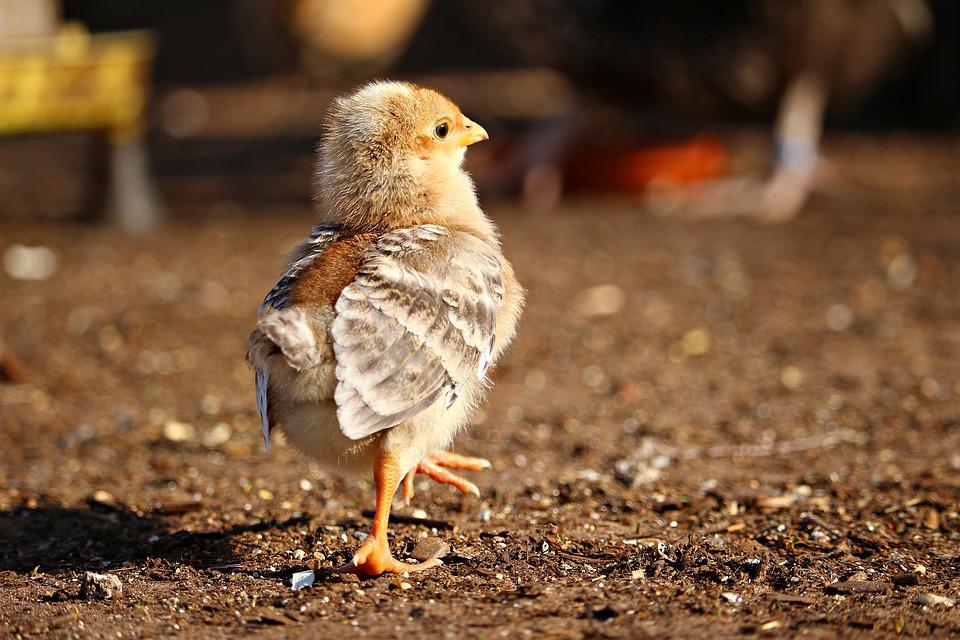Chickens get sick very easily. Disease can kill your whole flock overnight, so it is important to make sure that you do everything you can to keep them healthy.
The two most significant diseases are Newcastle disease (ND) and avian influenza (AI), also known as bird flu.
Newcastle disease
Newcastle disease is always present, and it becomes active at the beginning of the wet season. Day-old chickens are usually vaccinated with eye drops by the supplier, but they must be revaccinated at intervals throughout their lives.
When an outbreak is expected, a trained person must vaccinate the birds at least a month before the outbreak. The vaccination is inexpensive and if dosed correctly, it can save your flock. It is good to remain informed about diseases, as precautionary measures can save your business.
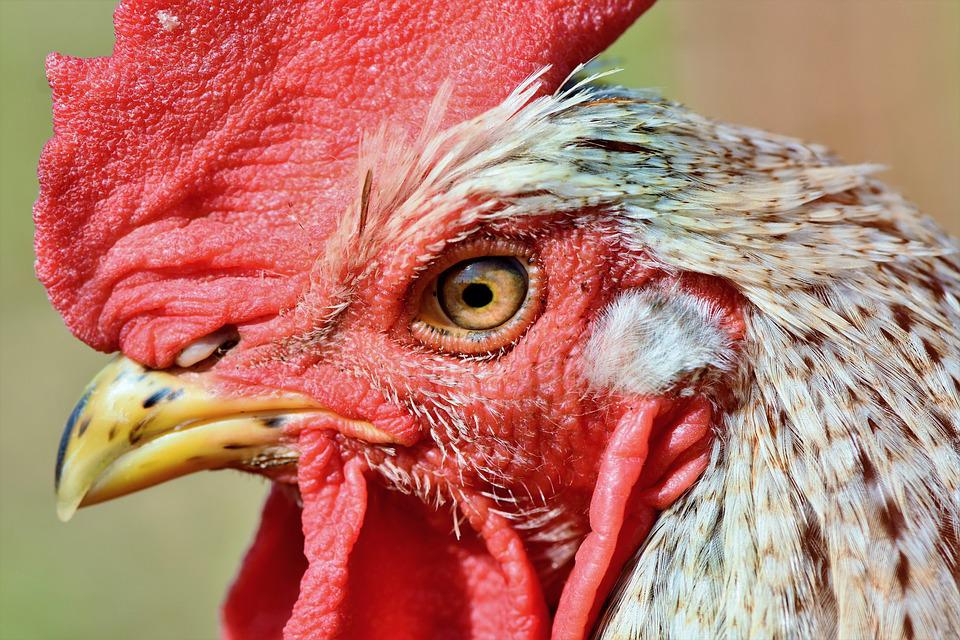
Healthy chickens appear alert and not listless, their eyes are clear and the colour of their wattles and comb in most species are bright red. (Source: Pixabay)
Avian influenza
Different strains of the H5N1, a highly pathogenic or infective avian influenza, referred to as AI or bird flu, are particularly dangerous to all poultry species, including chickens, ducks and geese. It even affects ostriches.
It also affects wild birds, which are believed to spread the disease. Especially migratory water birds can bring bird flu to your flock from far away.
Strict biosecurity measures must be followed to prevent this disease from spreading, and infected birds must be culled and the carcasses destroyed. Thousands of chickens have been culled as a result of this disease, for which no vaccine exists.
Some of the strains can infect and kill humans. From January 2003 to 31 March 2022, altogether 863 cases of human infection with avian influenza A(H5N1) virus were reported to the World Health Organisation in eighteen countries. Of the 863 cases, 455 (53%) were fatal.
Prevention is better than cure
It is better, and cheaper, to prevent a disease than to try and stop it once your flock is infected. In most cases all the birds will either die or will have to be culled.
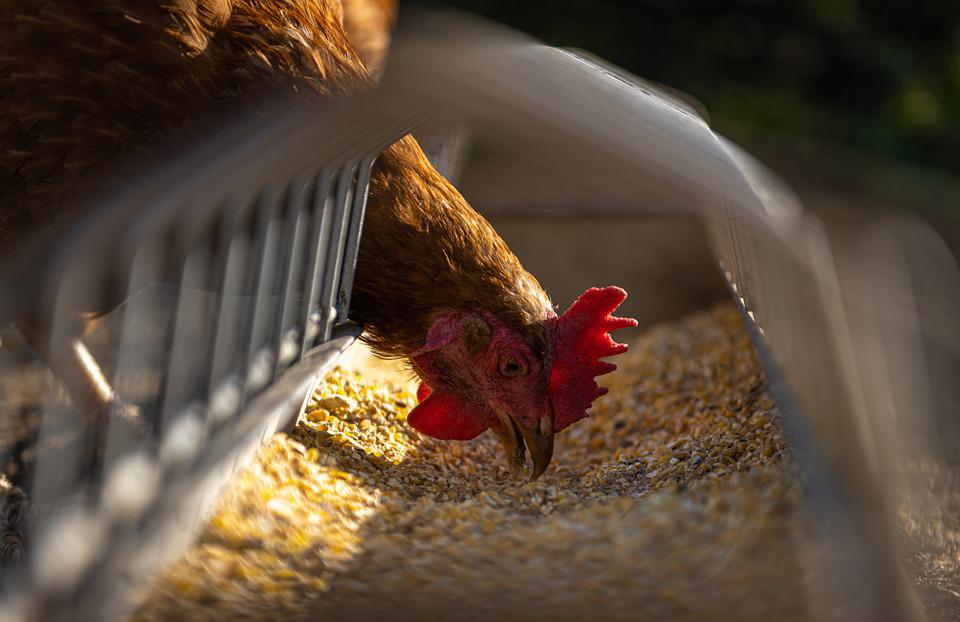
Sick chickens lose their appetite and do not eat, which causes them to lose weight and condition. (Source: Pixabay)
Good management, which includes timely inoculations and biosecurity measures, can protect your birds from some diseases and help them to perform well, whether they are broilers or layers. Sick chickens do not grow at the rate they should, which means they will not turn feed into either meat or eggs, which means you will make a loss.
Good management
Good management includes a programme on your farm to control disease and measure the growth of your chickens against standards set by the industry. Record-keeping is the way to know whether you are successful or not.
On-farm disease control programme Controlling disease on your farm consists of three steps, namely:
- disease prevention;
- early detection of sick birds; and
- treatment of identified disease conditions.
Disease prevention
One supplier
Start your flock with good quality chicks from a reputable and preferably only one supplier. If you must source chicks from more than one supplier, it
is best to keep these day-old chicks in separate brooders.
The day-old chicks should already have had their first vaccination against Newcastle disease and bronchitis on the farm where they were hatched.

Wild migratory waterbirds are believed to spread bird flu. (Source: Pixabay)
If they have not been inoculated against Newcastle disease, the vaccine must be administered at the age of ten days by means of their drinking water, and again at the age of twenty days. At the age of fourteen days, medication against gumboro disease must also be administered through the drinking water.
Gumboro is a highly infective viral disease that affects the immune system of young chickens. It can last more than fifty days in contaminated feed, water, manure and insects, and longer than four months in the poultry house after an infected flock had been removed.
This is only a directive, and a veterinarian or the suppliers of the vaccine must be consulted on the type of vaccines and methods and times of administering them.
Vaccination
Vaccination works best when the possibility of disease is minimised through a properly designed management plan and biosecurity measures. On its own, vaccination won’t protect your chickens against devastating disease or poor management. It is therefore best to develop a vaccination programme for your chickens in consultation with a poultry veterinarian. The vaccination programme must be based on the local diseases and the availability of vaccines, and every bird must receive the correct dose of vaccine.
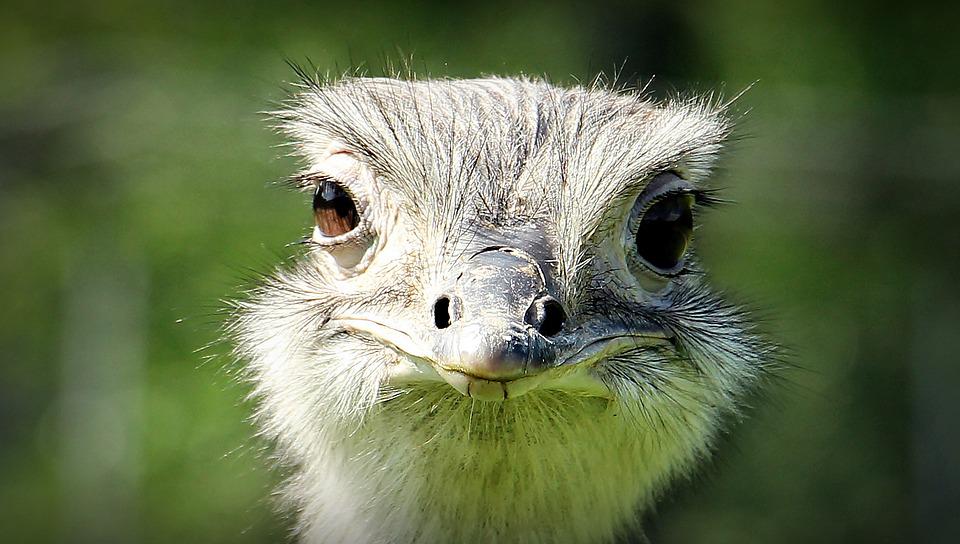
Thousands of ostriches had to be culled as a result of bird flu, which cost the ostrich industry lots of money. (Source: Pixabay)
Warning signs of infectious diseases
Here are some warning signs of the most common infectious diseases in your chickens, namely respiratory diseases, diarrhoea and nervous system problems.
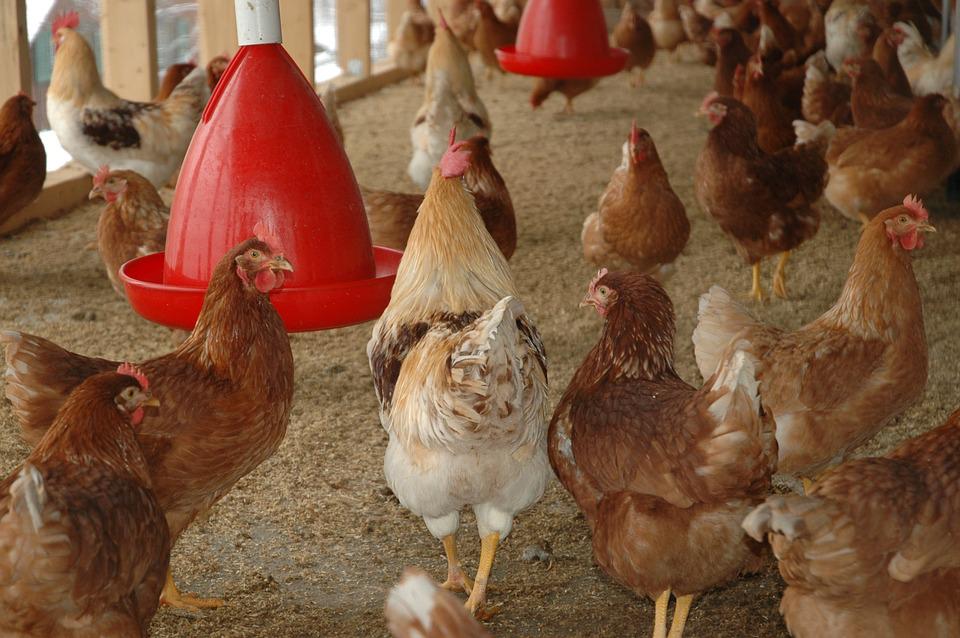
Chickens need sufficient fresh, cool water without contaminants to remain healthy. (Source: Pixabay)
Respiratory diseases
Respiratory problems are very common in chickens and can be caused by several pathogens like fungi, bacteria, viruses like avian influenza, and parasites like mites.
The chickens will display difficulty breathing with their beaks hanging open, and they could be making wheezing, snoring or clicking noises. They may also sneeze or cough, have swollen sinuses and wetness around the nostrils and eyes.
If chickens do not have an appetite as a result of these respiratory diseases, they may show weakness and lose weight and condition.
Diarrhoea
The sure signs of diarrhoea, also known as scours or dirty vent, is loose and watery droppings with a different colour than usual, and it may contain signs of blood. As a result of the loose droppings, the feathers around the vent (backside) become dirty and stick together.
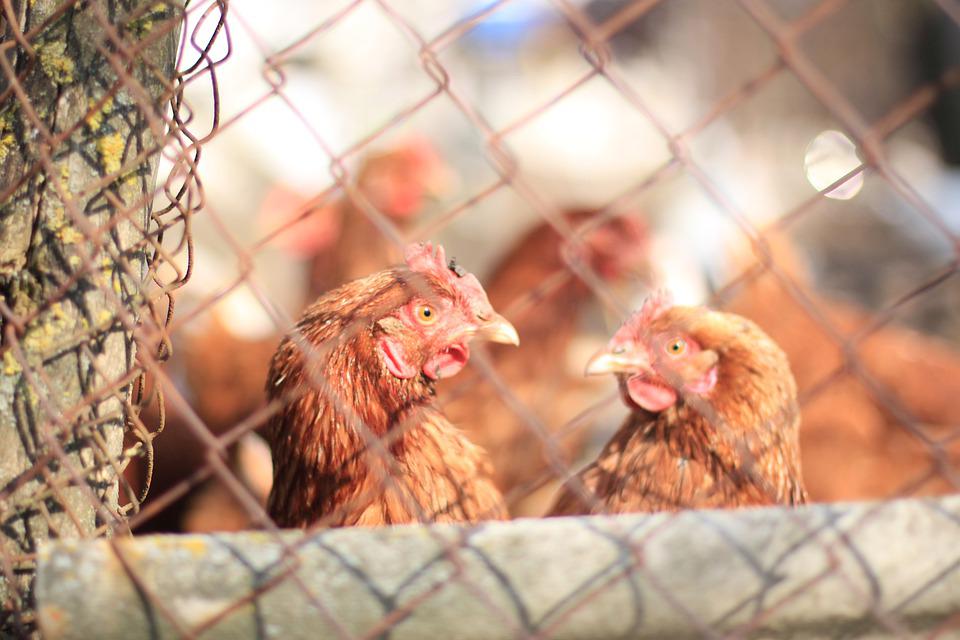
Sick chickens must be removed from the rest of the flock to avoid infecting the rest. (Source: Pixabay)
Diarrhoea often leads to depression, lack of appetite, loss of weight and condition. If it is not properly managed, the affected chickens may die.
Nervous system problems
Problems with the nervous system also cause problems with blood supply, mental problems like depression, and respiratory infections.
The legs of the poultry are affected, causing lameness or crippling, causing them to limp or refuse to move. It may also include paralysis, with heads and necks pulled over their backs or twisted to the side, while they stare upwards or limp around in circles.
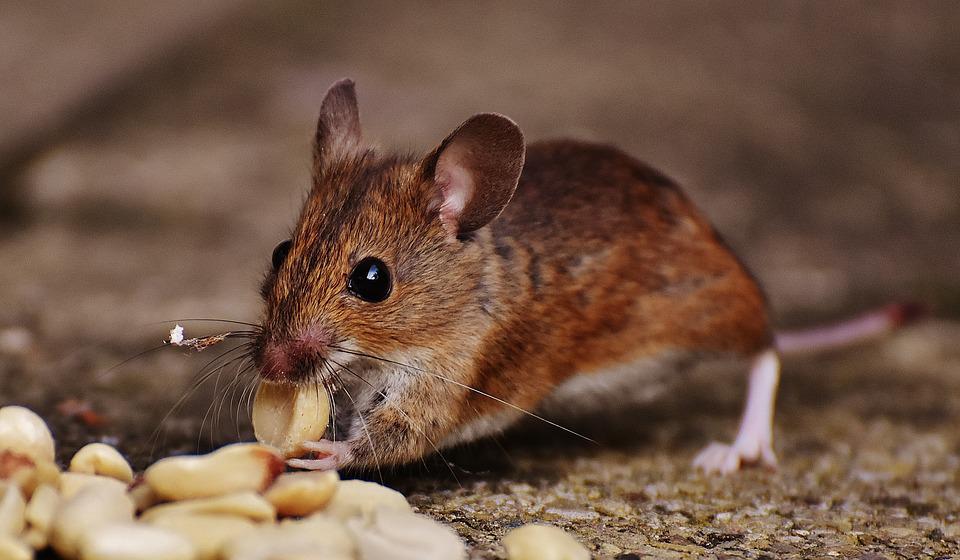
Rodents such as mice and rats should be kept away from the poultry house and especially the feed, as they carry diseases. (Source: Pixabay)
These conditions may be caused by viral diseases such as Newcastle disease or Marek’s disease. This disease is caused by a highly contagious viral disease of the chicken herpes family. It suppresses the bird’s immunity to other diseases such as coccidiosis. Coccidiosis is a common intestinal disease caused by several species of parasites, which damage the intestinal lining and prevents chickens from absorbing nutrients from food.
Steps to take
Most often there is no treatment for these conditions, especially if they are caused by a pathogen-like virus.
It is therefore important to ensure that preventative measures like vaccinations and biosecurity measures are in place.
Early disease detection
Disease problems can occur even under the best conditions. To detect disease at an early stage, you must measure your chickens’ growth by comparing it to known standards set by the industry. If they do not compare well, you will know that something is wrong, and you can investigate the reason. Once you have figured out what the problem is, or even before, call a veterinarian or state animal health services.
The birds must be inspected and measured against production standards. You can watch them to see any problems, but it is best to weigh samples and keep record of all information.
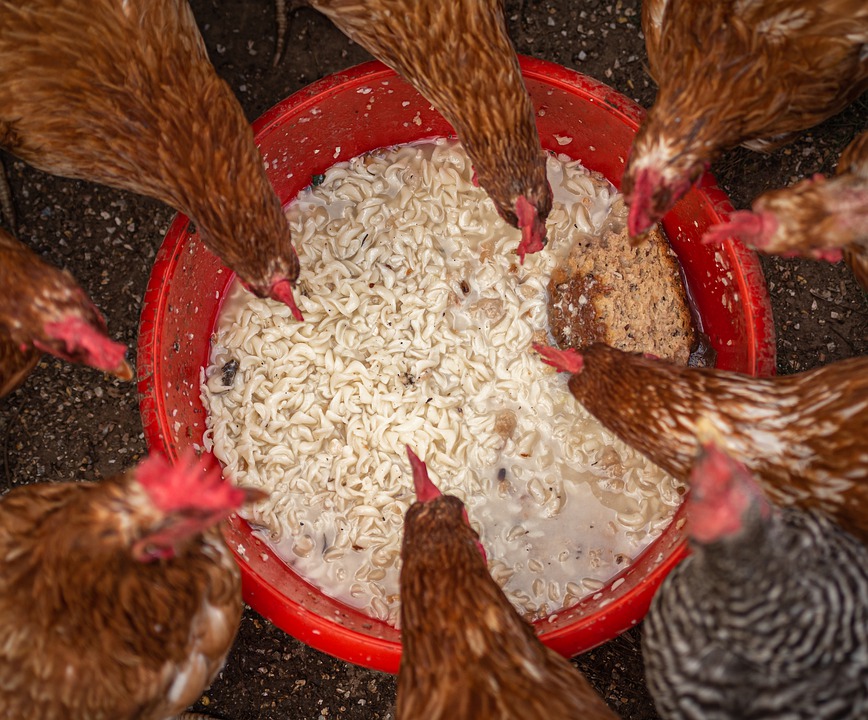
To prevent disease, only the best feed suitable for the age and function of the chickens must be provided. (Source: Pixabay)
Weighing
Chickens must be weighed on a weekly basis throughout the growth period. About five to ten percent of the total number of chickens must be weighed at one time, so in a broiler with five hundred chickens, twenty-five to fifty chickens must be weighed. Don’t weigh only the largest ones, but select them at random. The expected target mass of broilers at different ages:
Signs of distress
Besides their body mass, you can check for these signs to find out if something is amiss:
- what did the day-old chicks look like when they arrive — were they perky and inquisitive, or listless?
- what was their average weight after one week?
- how many of your chickens died per day and per week?
- how much food did they eat?
- how much water did they drink?
- how much weight did they gain per day?
- how many eggs did your laying hens lay?
- how successful did they turn the feed they eat into growing?
- are they moulting (losing their feathers)?
- do your chickens seem dull and listless?
- do they cough?
- are they lame and cannot walk around; and
- were the carcasses rejected at the abattoir?
Disease investigation
To be able to detect disease, you must know what to expect from your chickens at each age. When you suspect something is wrong, seek veterinary advice as soon as possible so that pathogenic viruses and bacteria can be isolated.
It is important to keep up to date with local and regional health concerns in order to prepare for the unexpected.
Ill health in you birds can be caused by a variety of causes and interactions. Use a systematic approach when trying to determine the cause of health issues.
Investigate these factors:
Feed: Do the chickens have the right quantity and type of feed suitable for their age and purpose, what is the nutritional content and how palatable is the feed, does the feed contain contaminants or toxins, how much are the chickens eating or have they stopped eating?
Light: Is there adequate lighting with the correct intensity in the poultry house, and are the birds uniformly exposed to it so that they can grow and
develop efficiently?
Litter: What type of litter is used, how thick is it and is it properly distributed to cover the whole floor, or is it wet and smelly and containing toxins and contaminants that can cause viral and bacterial growth?
| Age (Days) | Mass at age (grams) | ||
| Rooster | Hens | Assorted | |
| 1 | 40 | 40 | 40 |
| 7 | 135 | 135 | 135 |
| 14 | 405 | 395 | 400 |
| 21 | 790 | 720 | 755 |
| 28 | 1 200 | 1 055 | 1 125 |
| 35 | 1 640 | 1 410 | 1 525 |
| 42 | 2 105 | 1 770 | 1 940 |
Air: Is the poultry house well ventilated, but not draughty, is the temperature and humidity suitable, or does the air contain contaminants and toxins?
Water: Do the chickens have enough clean, cool water without any contaminants or toxins, and are they drinking enough water?
Space: Are there too many birds in the poultry house, are there enough feeders and waterers so all of them can reach the feed and water, and are
there any limiting obstacles?
Sanitation: Is the inside and outside of the poultry house clean and well maintained, are there any pests and rodents and how are they controlled,
are dead birds removed immediately, and is the wet litter regularly replaced with fresh material to avoid a build-up of worms and other parasites? How well is the poultry house and surroundings cleaned and disinfected before a new batch of chickens arrives?
References
Arbor Acres broiler management guide. (2009) Aviagen https://eu.aviagen.com/assets/Tech_Center/AA_Broiler/AA-BroilerHandbook2018-EN.pdf
Cilliers, P.F. (July 2000) Smallscale poultry housing in South Africa. ARC- nstitute for Agricultural Engineering.
Cilliers, F. (Project manager) (2001) Small-scale broiler house (combined). ARC-Institute for Agricultural Engineering.
Clarke, S. (n.d.) Ten things every chicken owner should know about Marek’s disease. this NZ life.
https://thisnzlife.co.nz/10-thingsevery-chicken-owner-knowmareks-disease/
Family poultry training course trainee’s manual. http://www.sapoultry.co.za/pdf-training/trainers-manual-poultry-course.pdf
Human infection with avian influenza A(H5) viruses. (1 April 2022) Avian Influenza weekly update number 838 World Health Organization.
www.who.int/docs/default-source/wpro—documents/emergency/surveillance/avian-influenza/ai20220401.pdf?sfvrsn=30d65594_220
Lera, R. (2020) Infectious Bursal Disease (Gumboro) in laying hens. Hendrix Genetics layinghens.hendrix-genetics.com/en/articles/Infectious_Bursal_Disease-IBD-Gumboro-Gumboro_disease-disease-poultrychickens-laying-hens-poultry_diseases-black_chicken-brown-chicken-white-chicken/
Mormina, K. S. (n.d.) Coccidiosis: What backyard chicken keepers should know. The Chicken Chick. https://the-chicken-chick.com/coccidiosis-what-backyard-chicken/
Warning signs of infectious diseases in poultry (2021) Epol https://epol.co.za/warning-signsof-infectious-diseases-in-poultry/

